| This is a picture of a Martin MB-2 bomber, used by the U.S. Army Air Service after WWI, and the type that sent the Ostfriesland to the bottom. | 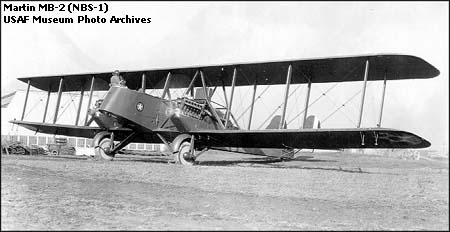 |
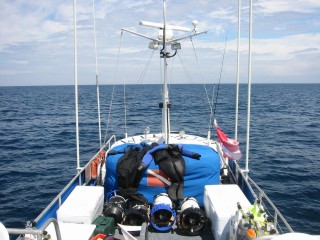 |
It is a beautiful morning following our trek from the U-117
and Ethel C (dived the previous day). The weather just kept
getting better all day long. This is looking forward from the
top sundeck of the Miss Lindsey, a favorite after-dive hangout spot on
nice days.
Captain Charlie quickly and easily hooked the large wreck in 380 feet of water. |
| Myself (left) and my dive buddy Jackie Smith (right) prepare to go set the hook on the Ostfriesland. There are three teams of bottom divers: Jackie and myself will go in first, followed by Dave Widen and Bill Ripley after the hook is set, then JT Barker, Rick Atkins and Tom Sawicki. Our plan is that if we are unsuccessful tying in (i.e. a bad or false hook), I will send up a styrofoam cup to let the others know. |  |
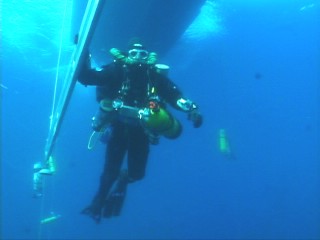 |
Jackie swims along the Miss Lindsey's hang bar to the descent line. Initially there was a bit of a current which diminished past 30 feet or so. Our plan was to turn at 20 minutes, with a 136 minute runtime using VPM. We're both diving closed-circuit rebreathers, Jackie a BMR500 and myself a Mk-15. Our tables are for a 9/75 trimix diluent, but I actually ran a bit higher on the helium at 9/80. We are both carrying a side-slung deep bailout bottle with 10/60 trimix, and a smaller, shallow-water bailout attached to the rebreather. |
| We reached the top of the wreck at 310 feet much sooner than we expected - after 100 feet or so we were flying down! The entire wreck is turtled (upside down), with the interesting, contoured hull the first thing that you see. The wreck is extremely impressive in shear size, and reminded me somewhat of descending on the Andrea Doria. | 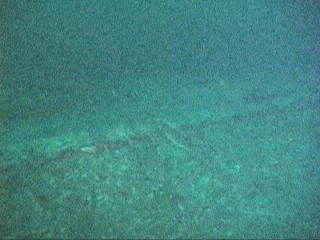 |
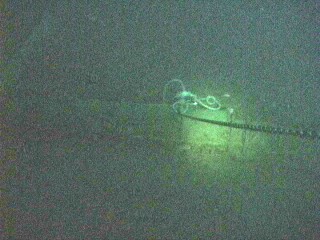 |
Our anchor line didn't stop at the hull, and proceeded to drop another 70 feet into the debris field. At this moment we first saw what the grapnel had hooked, the solid bronze forward mast that is broken off and laying in the sand on the starboard side. We knew it was the forward one based upon the way the hull looked. |
| The Miss Lindsey uses a rather small grapnel for these types of dives, making it easy to reposition rather than forcing the divers to "hump" around a huge, heavy object at extreme depths. There is a long rope (at least 15 feet) tied to the end of it to make tie-ins even more convenient. It is the job of the last team to untie the grapnel and make sure it is free of wreckage. |  |
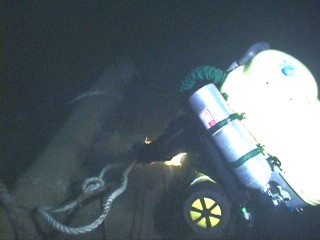 |
After we had un-knotted the rope, Jackie loops it around the mast. Here we are at 375 feet. |
| This is a small, brass light on the mast. Bronze-to-bronze connections, and I didn't bring any tools.... | 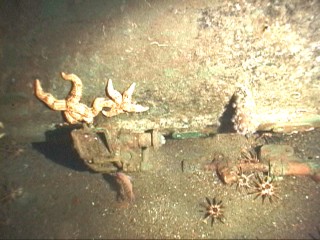 |
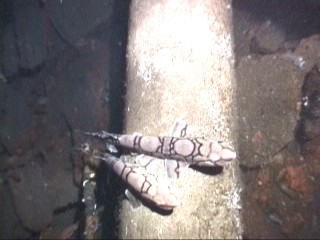 |
Two chain dogfish hang out. They are a type of small shark. These guys were all over the place down there! They didn't seem to mind us at all. They are definitely a deep water species, not very common above 200'. |
| The mast goes off, and we decide to explore the debris
field underneath the ship (the hull is held up about 8 feet off the
sand by its large main gun turrets and superstructure).
This bronze mast would look great in front of Billy Cleary's restaurant... that way everyone could see it, not just me and my dive buddy Jackie! ;-) |
 |
 |
Looking up at the hull. The anchor line is in the top left of the picture. |